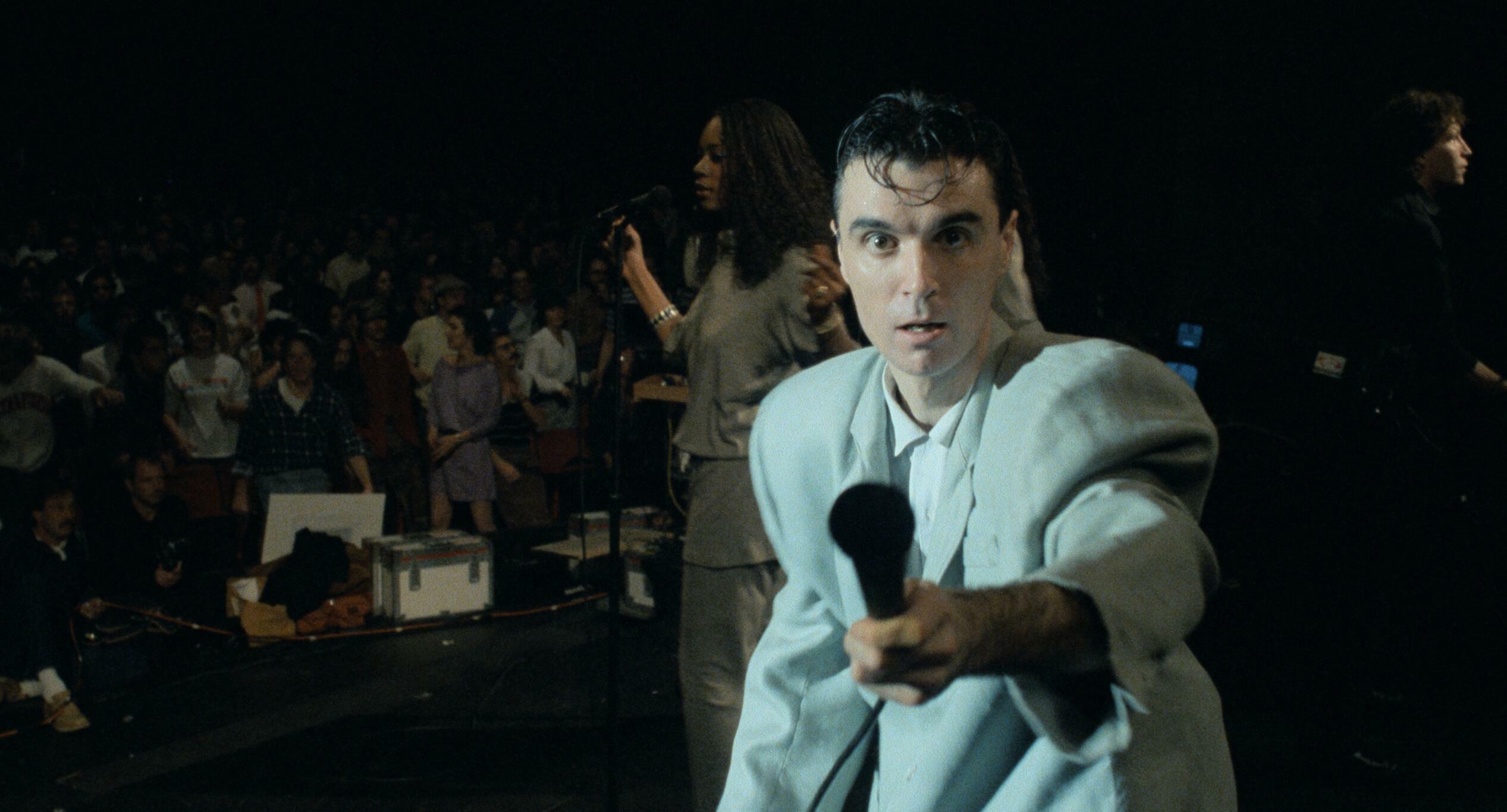When Headliner connects over the phone with Jerry Harrison, he’s currently in the midst of a Talking Heads revival of sorts. In tandem with guitarist Adrian Belew, who was part of the band’s touring setup in 1980, he has been performing a run of gigs that has sought to bring one of their most ambitious and beloved concerts back to life for contemporary audiences. And it’s not Stop Making Sense.
Over a decade ago, footage of a 1980 show in Rome in support of their masterful Remain In Light album surfaced on YouTube. It features a similarly sized ensemble of musicians shoehorned onto a stage together, jamming their way through a set of material that seamlessly weaves the most disparate aspects of their sound together. The twitchy post-punk of early anthems Psycho Killer and Stay Hungry sit comfortably alongside the looser, more experimental music they were making at the time, with the likes of Born Under Punches (The Heat Goes On) and Houses In Motion ebbing and flowing seemingly without beginning or end. It may not possess the tightly choreographed precision and visual spectacle that defined Jonathan Demme’s 1984 film, but it is no less thrilling.
Prior the Stop Making Sense remastered re-release, which saw Harrison, David Byrne, Tina Weymouth and Chris Frantz reunite for a Q&A with Spike Lee at its premiere at the Toronto International Film Festival – the first time the four had been in the same room in 21 years – Harrison had been working with Belew and several other musicians to recreate that Rome show across a number of North American tour dates.
Joining us from his San Francisco home studio earlier this year, Harrison speaks at length about what inspired him to revisit those shows, as well as what life was like inside the worl of Talking Heads during the making of Remain In Light.
“Every now and again when Adrian and I got together we would talk about how fantastic that concert in Rome was, and how cool would it be to recreate it,” he explains. He speaks slowly and thoughtfully with a weathered, gravelly low register. “It was all supposed to happen for the 40th anniversary of Remain In Light in 2020 but obviously that didn’t happen because of the pandemic. So it got pushed to 2021 and we’ve been doing that for the past two years. And hopefully we’ll bring it to Europe at some point.”
Inevitably, comparisons between the Rome show and Stop Making Sense were made when the 1980 footage first appeared on YouTube over a decade ago. It’s impossible not to draw certain parallels on account of the profoundly distinctive entity that Talking Heads were as a live act during that era, but they are very different shows. Belew’s presence, Harrison believes, is one of the of primary distinctions.
“Adrian is a unique guitar player and his presence distinguishes it from Stop Making Sense,” he says. “And it was much looser than Stop Making Sense, where the show became more choreographed from the lighting to the background scenery. It was a far more constructed visual experience, whereas 1980 was just a whole line of musicians onstage. And one of the things that happens when you have a whole line of musicians onstage is that you sometimes find one side of the stage goes off on a jam that’s a different to what’s going on at the other side of the stage [laughs]. That was sometimes abstract and wonderful and other times it was a bit chaotic! This was the first attempt for us at what a big band could be, and it was all about the joy in the music and not precise visual presentation.”
He is also quick to address the absence of his former primary bandmates.
“I thought, if I’m not doing a show with Chris, Tina, or David, I still want to do something that felt authentic,” he says. “Adrian was part of that touring band, and then I wanted to find a group of musicians who weren’t session players but people who regularly play together so it had an organic feel to it, which is what the original band had. Also, it’s not just about nostalgia - there are a lot of young fans who never got to see Talking Heads who now get to see not just representatives of that band but an exciting, joyful group of musicians performing those songs.”
As the fourth of the main four members to join, Harrison’s role within Talking Heads was a unique one. Founded by Frantz and Weymouth, who quickly recruited Byrne as their frontman, the band had already written their first two albums’ worth of material by the time Harrison entered the fold. As guitarist and keyboardist with new wave icons Modern Lovers, he arrived with a considerable reputation within the NYC music scene, but his first task, he tells us, was not to change the band’s sound, but expand upon it.





